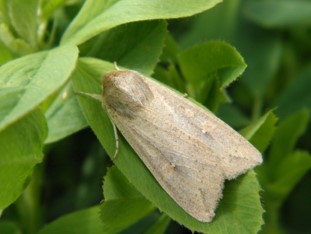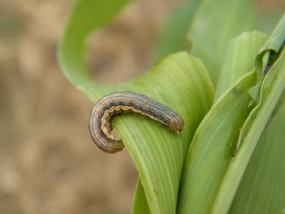Potential Larval Damage


Photo Credit: Krista Hamilton, Department of Agriculture, Trade & Consumer Protection, Wisconsin
The first generation of true armyworm larvae are active in Brown, Calumet, Dane, Dodge, and Fond du Lac counties. As the larvae reach their later instars, you may start to see rapidly occurring feeding damage. Be sure to scout your fields, so this damage does not surprise you. However, most of this reported damage is under the economic threshold.
Critical Economic Information
The economic threshold for insecticide treatment is reached when 25% of plants have 2 or more larvae present or when 75% of plants have 1 larva. In small grains, the threshold is 3 larvae per square foot.
Larvae are only susceptible to insecticide at <1 inch long.
Chemical control:
Refer to A3646, Pest Management in Wisconsin Crops, by following these links for true armyworm insecticide recommendations in corn, pasture, alfalfa (pg. 177), and small grains (Pg. 197).
For any plant, chemical treatment is only suggested if the larvae are ¾ of an inch or smaller. Be mindful that the larvae may move from dead grass to crops if an herbicide is used on weeds.
Scouting
Check 5 sets of 20 plants around the field at random for the presence of larvae damage. In small grains, 3 feet of a row should be examined in 5 different areas. See here for more information.
Learn more with UW-Madison Extension’s true armyworm resource and DATCP’s Field Note’s section on Alfalfa Weevil.
If you found this information on the web, you can sign up for insect pest text alerts here.





